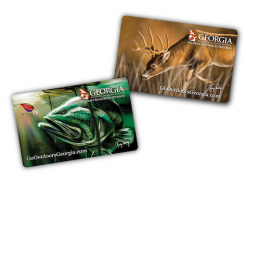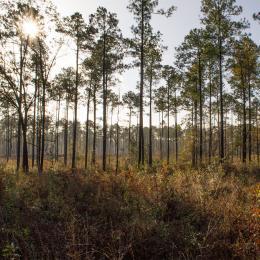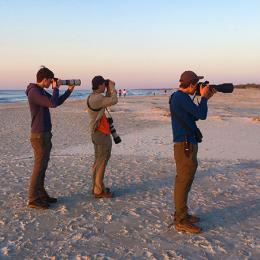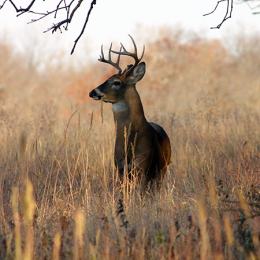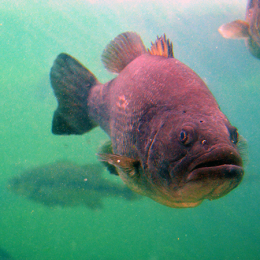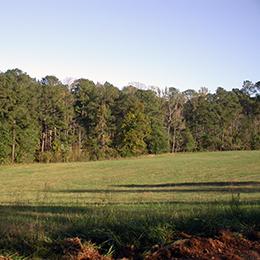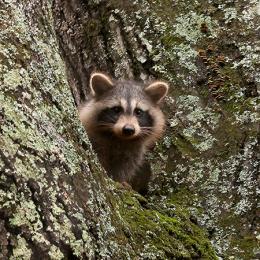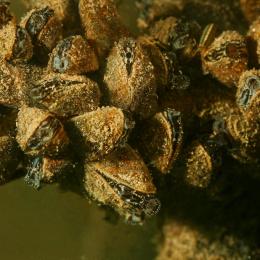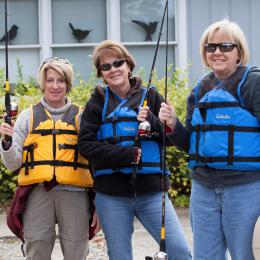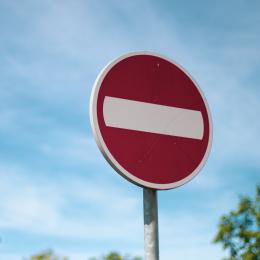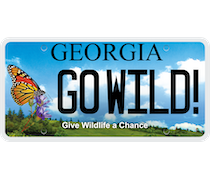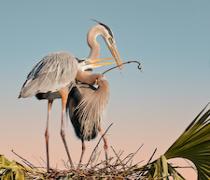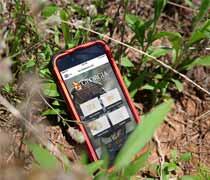The comprehensive revision of Georgia’s State Wildlife Action Plan is in place and in use.
Shaped by agency staff, conservation organizations and public comments, the overhauled conservation strategy now available in a dynamic digital format will guide wildlife work by the Georgia Department of Natural Resources and partners statewide for the next decade.
DNR’s Dr. Brett Albanese, who led the effort, said the revised plan has been submitted to the U.S. Fish and Wildlife Service for a required review. “But we have already started implementing it.”
For example, applications for 2025-2026 Conserve Georgia grants and loans through the Georgia Outdoor Stewardship Program will be scored based in part on priority areas and conservation actions identified in the updated Wildlife Action Plan, Albanese explained.
States must have an approved plan to receive funding from the State and Tribal Wildlife Grants Program, the nation’s core program to prevent wildlife from becoming endangered. Yet implementing the plans relies not only on these federal dollars but also other support, including from DNR and other conservation organizations. DNR’s work with nongame wildlife – species not fished for or hunted – depends largely on fundraisers such as the sale and renewal of bald eagle and monarch license plates, state tax checkoff contributions, and donations.
Georgia’s Wildlife Action Plan was created in 2005 and has been updated every 10 years since. The 2025 version will guide work to keep hundreds of species such as gopher tortoises, tricolored bats and yellow pitcherplants from becoming more rare and costly to conserve.
The revision two years in the making involved scores of organizations, expert analysis and extensive public feedback. Teams identified 1,062 “species of greatest conservation need” based on the status of each in the state, the importance of Georgia populations to global conservation and the available data.
“The revision forces us to take a hard look at species in our state to ensure we are focusing conservation efforts on the right species and habitats,” said Albanese, an assistant chief in DNR’s Wildlife Conservation Section. “It also gives us an opportunity to engage with the broader conservation community to tap into their knowledge and identify shared conservation priorities.”
Albanese added that DNR is “very grateful” to the hundreds of people, including those in the general public, who provided “time, talent and their thoughts throughout the revision process.”
Changes to Georgia’s Wildlife Action Plan include updated status checks on native animals and plants, best practices for conserving species and their habitats, and online maps to streamline conservation on public lands and waters and encourage voluntary efforts on private lands.
A new website for the plan, called the Wild Georgia Conservation Hub, hosts:
- A digital version of the plan.
- Story maps highlighting the approach for each Georgia ecoregions and major river basin.
- Technical team reports focusing on species groups (such as birds) or themes (such as education).
- Links to features such as a dashboard that tracks projects.
The Wild Georgia Hub also includes a video on how to use the plan and definitions of key terms.
Georgia’s Wildlife Action Plan has been key to conservation during the last 20 years. Projects such as the creation of Ceylon Wildlife Management Area near St. Marys and the expansion of Paulding Forest WMA in northwest Georgia were funded in part because they provided essential habitat for wildlife considered conservation priorities in the plan. Partnerships in which stakeholders pooled resources and collaborated on plan-centered goals helped keep gopher tortoises and sicklefin redhorse off the U.S. endangered species list. Education and outreach events have spread the word about species and habitats in the plan, informing generations of Georgians about the state’s wildlife and the importance of conserving it.
For more on work done through the State Wildlife Action Plan, explore the story maps at https://ga-state-wildlife-action-plan-gadnrwrd.hub.arcgis.com and the DNR Wildlife Conservation Section’s annual report at https://georgiawildlife.com/conservation/annualreport. The Wildlife Conservation Section is charged with conserving the more than 95 percent of native species in Georgia that are not fished for or hunted, plus rare plants and natural habitats.
WILDLIFE ACTION PLAN/AT A GLANCE
- Georgia’s State Wildlife Action Plan is a statewide strategy to conserve populations of native wildlife species and the natural habitats they need before these animals, plants and places become rarer and more costly to conserve or restore.
- Congress requires an approved plan for states to receive State Wildlife Grants, the main federal funding source for states to conserve nongame – animals not legally fished for or hunted.
- Plans must be updated every 10 years. Georgia DNR’s Wildlife Conservation Section coordinates updates. But the process involves more than 100 partners and stakeholders, from conservation groups and agencies to universities and private landowners.
- DNR submitted the 2025 revision to the U.S. Fish and Wildlife Service for review in June. The review, which could take months, will ensure the plan meets congressional requirements but will not change the plan’s species or priority areas.
- Created in 2005, Georgia’s Wildlife Action Plan has been revised every 10 years, as required. The latest revision includes an online tool to track conservation projects and the Wild Georgia Conservation Hub, a new website to explore plan data. The revised plan also identifies 1,062 “species of greatest conservation need” and the habitats essential for conserving them.
- For more: https://ga-state-wildlife-action-plan-gadnrwrd.hub.arcgis.com/





